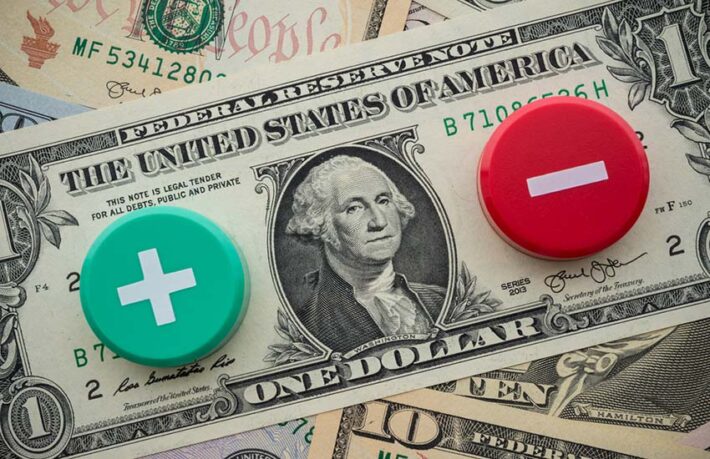Dollar falls modestly prior to key US inflation data; pound sterling rallies
The U.S. dollar slipped slightly on Tuesday, with investors awaiting the latest U.S. consumer inflation figures that could influence expectations for upcoming Federal Reserve interest rate cuts.
At 04:15 ET (08:15 GMT), the Dollar Index — which measures the greenback against a basket of six major currencies — was down 0.1% at 98.317, after climbing 0.5% across the previous two sessions.
U.S. July CPI in focus
Currency markets turned their attention to the release of July’s U.S. consumer price index later in the day, as traders sought fresh signals on the trajectory of U.S. interest rates.
A softer reading on inflation could strengthen market bets for a Fed rate cut next month. Conversely, any signs that President Donald Trump’s tariffs are adding to price pressures could prompt the central bank to hold off.
The headline annual CPI is projected to tick up to 2.8% from June’s 2.7%, remaining well above the Fed’s 2% target.
“While some rebalancing ahead of the release is possible, a hotter-than-expected number could still buoy the dollar by reducing expectations for a September Fed cut to under 20 basis points,” ING analysts wrote.
“Nonetheless, we believe labor market trends carry more weight than inflation, given the prevailing view that tariff-related price spikes are temporary and considering last month’s significant payroll revisions.”
Euro eyes Ukraine peace developments
In Europe, EUR/USD inched up to 1.1618 before the release of Germany’s ZEW economic sentiment index for August, which will offer insights into the eurozone’s largest economy.
The euro is also being swayed by anticipation ahead of Friday’s meeting between Russian and U.S. leaders to discuss the framework for a potential Ukraine ceasefire.
“We expect today’s U.S. CPI to drag EUR/USD back below 1.16, with downside risks toward 1.150 if the Putin–Trump summit produces limited progress,” ING said.
Meanwhile, GBP/USD gained 0.1% to 1.3451 after data showed the U.K. jobless rate held at 4.7% in the three months to June — the highest since July 2021 — while regular pay growth, excluding bonuses, stayed at 5.0% year-on-year.
“Although the labor market has cooled compared to earlier this year and is softer than in other major economies, the Bank of England has no urgent reason to speed up rate cuts,” ING added.
Yuan steady after trade truce extension
Elsewhere, USD/CNY edged up to 7.1897, showing little reaction after China and the U.S. agreed to extend by 90 days the deadline before imposing additional tariffs on each other’s goods.
The move eased fears of a renewed U.S.–China trade war and kept tariff levels between the two economies relatively low, bolstering hopes for a longer-term trade agreement.
Other majors
USD/JPY rose 0.1% to 148.33, while AUD/USD fell 0.2% to 0.6503 after the Reserve Bank of Australia cut its benchmark interest rate by 25 basis points to 3.60%, as widely expected.
This marked the RBA’s third rate cut of the year, continuing the easing cycle that began in the first quarter.

